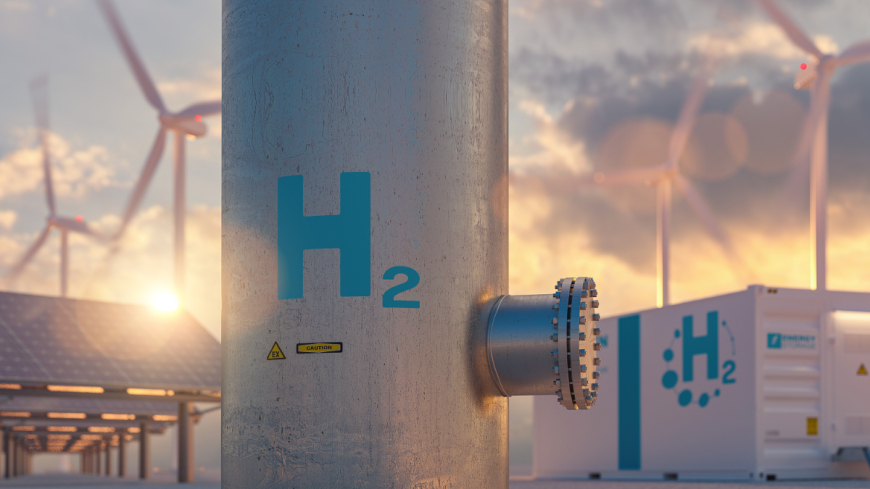Green Hydrogen: The Clean Energy Revolution That Could Replace Fossil Fuels
Green hydrogen is a clean fuel that could replace fossil fuels, reduce emissions, and transform industries. Discover how it’s shaping the future of energy.

Introduction
For decades, the world has relied on fossil fuels to power industries, homes, and transportation. But with rising concerns over climate change, pollution, and energy security, the hunt for a cleaner, more sustainable alternative has never been more urgent. Enter green hydrogen—a fuel that could redefine the global energy landscape.
Green hydrogen is seen as a game-changer because it produces zero carbon emissions, can be stored and transported efficiently, and has the potential to replace oil, gas, and coal in key industries. But is it truly the fuel of the future, or does it come with challenges that still need to be solved? Let’s dive deep into what makes green hydrogen so promising and whether it can replace fossil fuels for good.
What is Green Hydrogen?
Green hydrogen is hydrogen gas (H₂) produced using renewable energy sources like solar and wind. Unlike grey hydrogen (made from natural gas) or blue hydrogen (which uses carbon capture to reduce emissions), green hydrogen is produced through a process called electrolysis—which splits water (H₂O) into hydrogen and oxygen using electricity from renewables.
This means no carbon emissions are released in the process, making it one of the cleanest energy sources available today.
How is Green Hydrogen Produced?
The electrolysis process is at the heart of green hydrogen production. Here’s how it works:
-
Renewable Energy Powers the Process – Solar or wind energy generates electricity to run the electrolyzer.
-
Water is Split into Hydrogen & Oxygen – An electrolyzer separates water molecules into hydrogen and oxygen.
-
Hydrogen is Captured and Stored – The extracted hydrogen is compressed and stored for use in fuel cells, industrial processes, or transportation.
-
Oxygen is Released into the Atmosphere – This is a harmless byproduct of the process.
Why is Green Hydrogen So Important?
1. It’s 100% Clean and Sustainable
Unlike fossil fuels, which release carbon dioxide (CO₂) and other pollutants, green hydrogen emits zero greenhouse gases. It’s a renewable and sustainable energy source, helping nations meet net-zero targets.
2. It Can Replace Fossil Fuels in Hard-to-Decarbonize Sectors
Some industries, such as steel manufacturing, aviation, and shipping, are difficult to electrify. Green hydrogen can act as a direct replacement for coal and natural gas, drastically reducing emissions.
3. It Offers Energy Storage Solutions
One of the biggest challenges with renewable energy is intermittency—the sun doesn’t always shine, and the wind doesn’t always blow. Green hydrogen acts as an energy storage medium, capturing excess renewable energy and making it available when needed.
4. It Reduces Dependence on Imported Fossil Fuels
Countries that rely heavily on imported oil and gas can boost energy independence by producing green hydrogen locally. This enhances energy security and stabilizes prices.
How Can Green Hydrogen Be Used?
Green hydrogen has multiple applications across various sectors:
? Power Generation – Can be used in fuel cells to generate electricity for homes and businesses.
? Heavy Industry – Used in steelmaking, cement production, and chemical industries as a cleaner alternative to fossil fuels.
? Transportation – Hydrogen-powered buses, trucks, trains, and even aircraft are being developed to replace diesel and gasoline engines.
? Heating – Can be blended with natural gas to provide cleaner heating solutions for homes and buildings.
Challenges Facing Green Hydrogen Adoption
Despite its incredible potential, green hydrogen still faces major challenges that must be addressed before it becomes a mainstream fuel.
1. High Production Costs
Green hydrogen is currently more expensive than fossil fuels and other hydrogen types. Electrolyzers and renewable energy infrastructure require large investments, but costs are expected to fall as technology improves and production scales up.
2. Energy Intensive Process
Producing green hydrogen requires a significant amount of electricity, which means that expanding renewable energy capacity is crucial for widespread adoption.
3. Storage & Transportation Difficulties
Hydrogen is a lightweight and highly flammable gas, making it more challenging to store and transport than liquid fuels like gasoline. Solutions such as hydrogen pipelines, liquefaction, and ammonia-based transport are being explored to overcome these barriers.
4. Infrastructure Limitations
There is still a lack of refueling stations and pipelines for hydrogen distribution. Governments and private companies need to invest heavily in building a hydrogen economy to make it a viable replacement for fossil fuels.
Countries Leading the Green Hydrogen Race
Several nations are making significant investments in green hydrogen technology:
-
Germany – Aims to become a global leader in hydrogen production and is investing billions in research and infrastructure.
-
Japan – Developing hydrogen-powered vehicles and has set ambitious hydrogen economy targets.
-
Australia – Rich in solar and wind resources, Australia is positioning itself as a major green hydrogen exporter.
-
United States – The Biden administration has launched the Hydrogen Energy Earthshot Initiative to cut hydrogen costs by 80% in a decade.
The Future of Green Hydrogen
Green hydrogen is still in its early stages, but momentum is building. With growing government support, technological advancements, and corporate investments, green hydrogen could become the backbone of a decarbonized global economy.
? Will green hydrogen fully replace fossil fuels? Possibly, but it will require a massive scale-up in production and infrastructure.
? Can it work alongside other clean energy sources? Absolutely—hydrogen will likely complement solar, wind, and battery storage in the future energy mix.
? Is it the silver bullet for climate change? No single solution exists, but green hydrogen is one of the most promising tools in the fight against global warming.
As the world transitions toward cleaner, more sustainable energy sources, green hydrogen is emerging as a powerful contender. The question is: Are we ready to invest in its future?
What's Your Reaction?
 Like
0
Like
0
 Dislike
0
Dislike
0
 Love
0
Love
0
 Funny
0
Funny
0
 Angry
0
Angry
0
 Sad
0
Sad
0
 Wow
0
Wow
0



















































